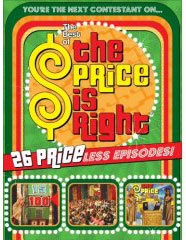
Save money!
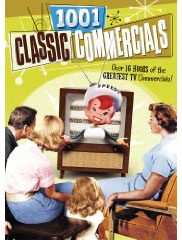
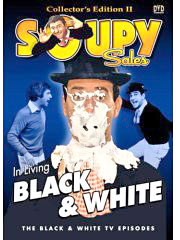
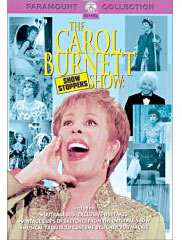
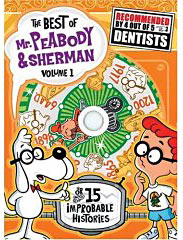
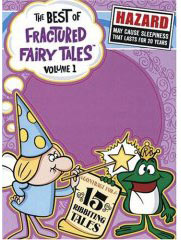
 |
Save money! |
 |
 |
|
 |
 |
 |
TV Shows on DVD/ / / / / TV Blog/ / / / / Punk Book/ / / Holiday
Specials on DVD / /
/ /Classic
Commercials / / / TV
Shows on DVD Reviews
|
|||||||
|
by L. WAYNE HICKS Monty Hall may be best known for two things - raising money and giving it away. The longtime host of the classic game show Let's Make a Deal has earned considerable acclaim for his unwavering support of charitable causes. Now 80 years old, Hall is out of the game show business. One of his daughters brought Let's Make a Deal back to NBC earlier in 2003 with a new host, but the show didn't last. Face it. Without Monty Hall weaving his way through the audience, striking deals big and small, "Let's Make a Deal" lacked a certain spark. That's what audiences realized the last time Hall brought the show back, briefly in the early 1990s, but a lukewarm reception for his replacement pulled Hall (born Maurice Halprin) out of retirement. Going into the revival on NBC, Hall knew that wasn't going to be the case. Except for a cameo appearance, the Canadian-born actor-turned-game show icon wasn't about to go near Let's Make a Deal again. "I've had it," he said in a telephone interview before the show returned to the airwaves. "I did 4,700 episodes. Isn't that enough?" Hall wasn't just the host of the show. He co-created it, with Stefan Hatos. Ably helped by the likes of announcer Jay Stewart and model Carol Merrill, Hall kept this relatively simple show running from 1964 until 1986, first on NBC, then ABC and finally in syndication. "It always had a big audience no matter where they put it - daytime, nighttime, syndication," Hall said. STORY CONTINUES - AFTER THIS AD FOR VIDEO DOWNLOADS:
Known for an audience dressed in outlandish costumes, "Let's Make a Deal" began sedately. The audience dressed in suits and dresses suitable for a night out at a nice restaurant. The crazy costumes came later, bringing a visual appeal that further won over the viewing audience. Unlike some game shows, Let's Make a Deal didn't require a wealth of knowledge. All any contestant had to do was decide one simple thing - keep what they've already won or trade it for what's behind door No. 1, 2 or 3. Or maybe go for what's behind the curtain. Maybe they were expecting a new car, but they wound up with a "zonk" instead - say, a donkey or Stewart sitting on a giant rocking chair. During a phone call, Hall talked at length about the show that made him a pop-culture icon, why his audience began wearing costumes and the importance of charity work. During the last 50 years, Hall has helped raise more than $800 million.
Hall: I was brought up that way. I remember when I was growing up in Winnipeg, Canada. We didn't have two nickels to rub together, but my mother was always out there raising money for some cause. That was the background and the background of my grandfather who had come over from the old country and brought people from his little town over and started helping them in business. As I got more successful, I felt it was more incumbent upon me to help the other people. I did more and more and the more I did the more I wanted. Of course when I got to be a star on "Let's Make a Deal," I started getting 20 calls a week. I would respond. My fee was zero. They liked my fee and they liked the job I did and I raised, in the last 50 years, I raised $800 million. And it's been a great ride. LWH: Is it enough as a celebrity to write a check? Hall: It may not be enough, but it's part of the deal. Some people write checks and some people show up and help out. The best one, of course, is if you show up, help out and write a check. But as long as you participate in some manner, that's all I can ask for. I don't want people to do like I do. I give away all my money and I do all these benefits and I travel all over. You don't have to emulate me, but do part of it. LWH: What charity do you spend most of your time working with these days? Hall: I'm the international chairman of the Variety Club, which is the children's charity all over the world. LWH: What kinds of things are you raising money for? Hall: Well, each chapter is autonomous. Each city is autonomous and they pick their own children's charities. It can be a camp for the handicapped. It can be a leukemia ward. It can be working with children with AIDS. They pick their own charities. It is a wonderful program. LWH: I read that Let's Make a Deal wasn't easy to get on the air initially. Hall: No, it was not. My partner [Stefan Hatos] and I created the show in 1963, actually '62-'63. We did run-throughs of it all over town. Small audiences, big audiences, different kinds of audiences, to see how it would play. We didn't have the prizes. This is what we had: We had envelopes and we had a rubber chicken. But whenever we played the either-or, the box or the curtain, it always provoked quite a bit of excitement on behalf of the contestant by the audience. Then we showed a full stage run-through for two networks - there were only three networks, and the third one, CBS, was not interested in game shows. So we showed two full-blown run-throughs to NBC and ABC and the crowd was marvelous. The crowds were terrific. The reaction was terrific, but neither one wanted to buy it. They said, "It's a one shot. You do it today, what do you do tomorrow?" Not realizing that in all shows of that type, it's the same with variations. Finally, NBC decided to make a pilot of it. We made a pilot of it in April of 1963 and didn't hear a word. Did not hear a word. Although friends of mine in the advertising business in New York called me to say, "That's the best pilot we've seen of a game show in a long time." The network wasn't buying it. It was too different. So finally when they had a time period that was suffering, and they'd canceled one show after another in that time period, they came to us and said, "All right" - this is in September, I guess - "can you be ready to go on in January?" We went on in January. The rest is history. LWH: Was it an immediate success? Hall: Immediate. LWH: Why do you think it caught on? Hall: It was a show that you played at home and you're saying to the contestant do this and do that. When you at home are involved in yelling at the screen, then you know you've got an audience. People would yell out, "Take door No. 1," "Take the curtain," "Take the box." They were outsmarting the show, they were pitting themselves against the show, as the contestant was doing. That was one of the great attractions of the show, and the fact that people were selected at random in the audience. "It could be me. I could be on that show. I don't have to pass any tests like Jeopardy." That would attract the ordinary citizen and they saw the people selected on the show were a cross-section of America. It was a success before people started showing up in costume. The first people showed up with signs on poles to attract my attention, figuring that if I'm picking people at random, maybe if I held up a sign he'll come to me, which I did. And the next week, everybody had a sign. And then after the signs came the funny hats. And then in about the third week or the fourth week they started showing up as Phyllis Diller lookalikes or Frankenstein or Dracula or pirates or whatnot. That added a whole new flavor, very pictorial. They were never picked for what they were wearing because that would turn "Let's Make a Deal" into a costume show. Sometimes indeed we picked people who weren't wearing any costume. So there was a color to the show, a flavor to the show, an excitement to the show, and in the pit, always in the pit with the people. There was a great rapport between me and the contestants. LWH: Was there such a thing as an ideal contestant? Hall: No. I felt that everybody would be an ideal contestant. I'll tell you why. Because if you had contestants that just jumped and down and screamed, it would be a one-note show. It was wonderful when sometimes you'd get somebody who was very shy and had to be drawn out to make a decision, couldn't make a decision - a contrast to the overexuberant one. I liked that. I liked the fact that we had all kinds of reactions from the very quiet, introverted one to a highly excited one. My job was to bring out the introverted one and to calm down the overexcited one. |
"And
now, here's America's top trader,
Tell us your favorite moments from Let's Make a Deal! IT'S ALL RELATIVE: Monty Hall's daughter is actress Joanna Gleason, one of Hollywood's hottest actresses. Carroll Merrill's niece is Carla Gugino who plays Ingrid Cortez in Spy Kids and Spy Kids 2. Let's Make a Deal originally aired in primetime before moving to daytime. The daytime version ended its original run in 1977. TV
on DVD / / Holiday Specials
on DVD
|
|
TVparty! is TM and copyright 1994-2024 by Billy Ingram |
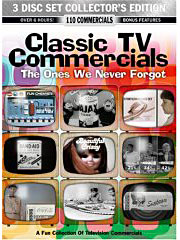 |
 |
 |
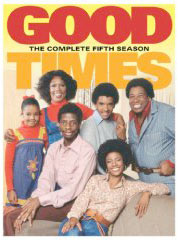 |
 |
TV
Shows on DVD/ / / /
/ / / TV Show Reviews / /
/ / / / / Punk Book/ / / / / / / Holiday
Specials on DVD |